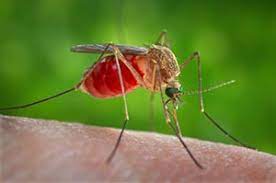IZS - Istituto Zooprofilattico Sperimentale Abruzzo e Molise
West Nile Virus: circulation of two viral strains confirmed in Veneto

- Source: Istituto Superiore di Sanità
In Veneto two strains of West Nile virus, called WNV-1 and WNV-2, are circulating. The confirmation comes from researchers of the Istituto Zooprofilattico Sperimentale delle Venezie (IZSVe) and the University of Padua, based on genetic analysis conducted simultaneously on mosquitoes, birds and humans. The results were published in the scientific journal Eurosurveillance .
Compared to 2021, when the circulation of the WNV in Veneto was highlighted from mid-July with a peak in August, this year the seasonal broadcast of the WNV began much earlier, already in June, probably favoured by the high temperatures of the spring months. The first positivity in the mosquito pool was detected on 7 June in the province of Vicenza, and then spread to almost all of Veneto. To date [28 July 2022] the virus has been found in mosquitoes in all the provinces of Veneto, with the exception of Treviso and Belluno.
The co-circulation of WNV-1 and WNV-2 has been confirmed by genetic and phylogenetic analysis conducted on samples from mosquitoes, birds and humans.
The researchers' focus has been on the WNV-1 strain, which reappeared in 2021 after eight years of absence from the northeast and seems to have stabilized in this geographical area. Veterinary surveillance of wild birds has identified WNV-1 in collared dove, pigeon, corvid and nocturnal birds of prey in the provinces of Padua, Rovigo and Venice. The hypothesis is therefore that the reintroduction of this strain may have been favoured at the origin by wild birds that have brought the virus in this part of the territory.
The researchers underline the fundamental role played by climate change in the dynamics of outbreaks of WNV in the animal reservoir (birds, mammals) and in disease vectors (mosquitoes). According to some epidemiological models, the low winter rainfall and high spring temperatures recorded in recent years in Europe may have affected the mechanisms of spread of the disease, increasing the growth rates of the mosquito population, puncture and transmission of the virus.
The integrated One Health approach to WNV surveillance in all three sectors - humans, animals and mosquitoes - has proved the sensitivity of the surveillance system at the regional level. The alert allowed the prompt screening of all blood donors living in Veneto, so as to avoid the spread of infection through donations.
At the moment there is no evidence of different clinical manifestations in humans for both strains. However, the systematic acquisition of virus genetic information during surveillance activities will be crucial to monitor the spread of virus circulation and to obtain information on the epidemic and pathogenic potential of the WNV-1 strain.
Scientific paper: Early start of seasonal transmission and co-circulation of West Nile virus lineage 2 and a newly introduced lineage 1 strain, northern Italy, June 2022
Source: IZSVe